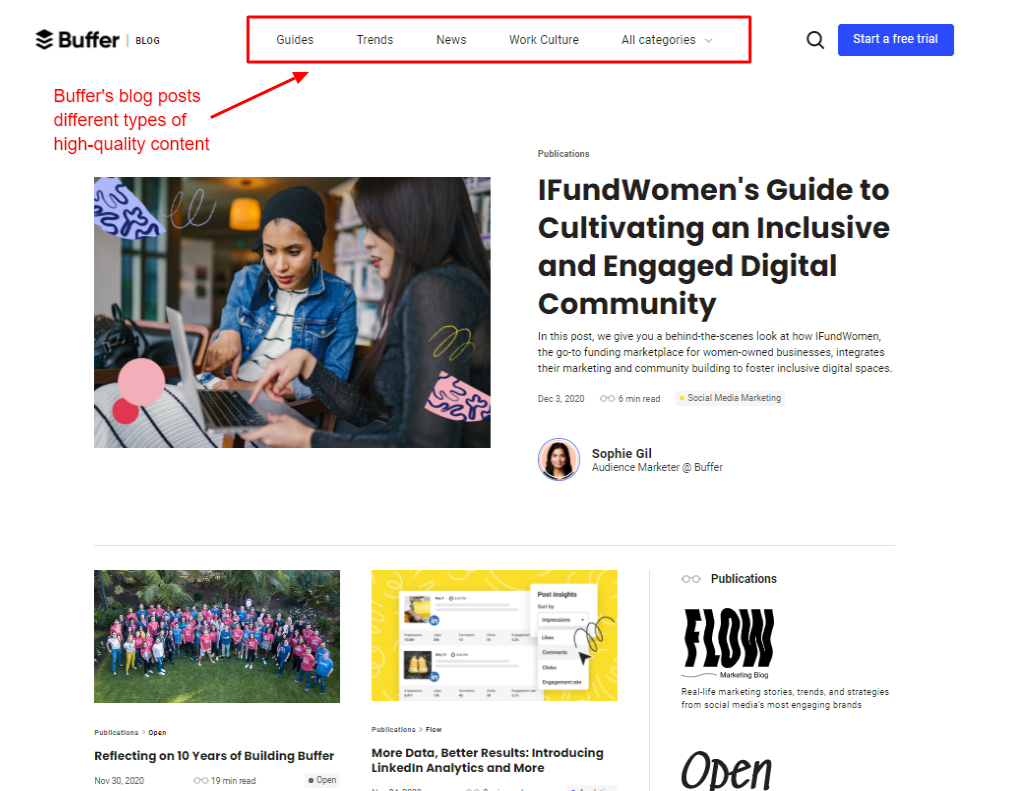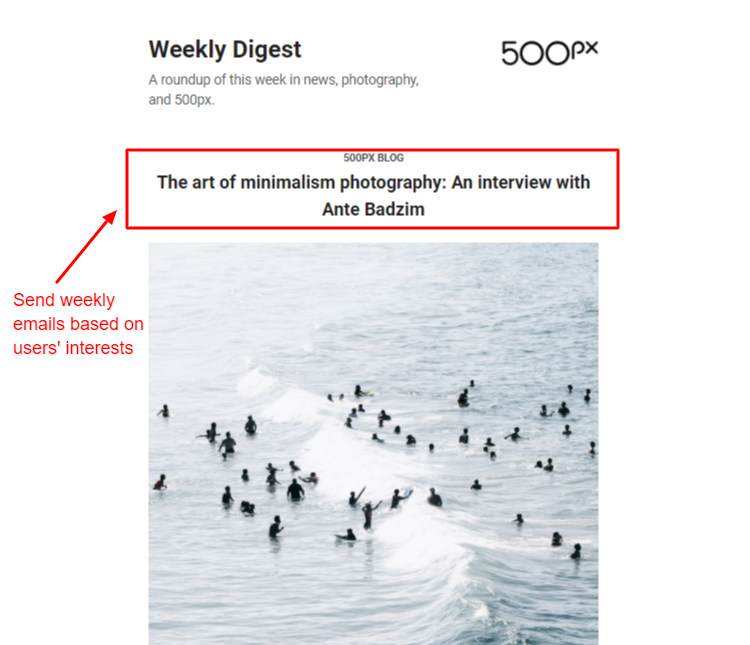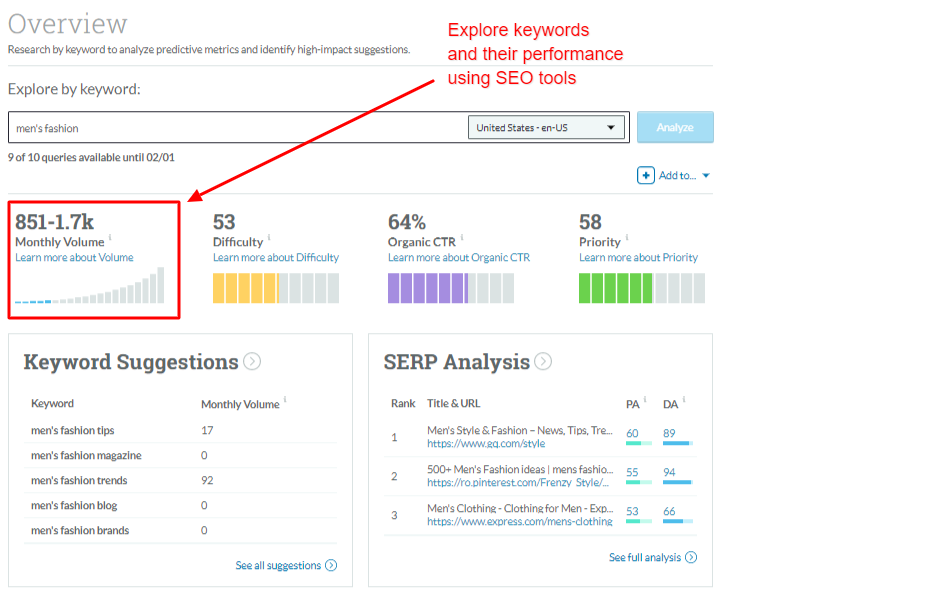
Ecommerce marketing takes a while to perfect, especially within the ever-changing online landscape.
Attracting leads and reaching customers is quite challenging. And, developing a meaningful relationship with them is even more difficult.
However, it is possible to make these processes easy by taking advantage of the right digital marketing channels.
Your marketing efforts will get expensive and tedious if you launch campaigns on all digital channels. Take note that not all digital marketing channels will benefit your business goals.
That means it is important to know how to strategically use each digital marketing channel to fully maximize their benefits while streamlining your marketing campaigns.
1. Use Your Website For Content Marketing
A business website, along with ecommerce platforms, is a necessary tool to educate your audience about your products, services, and overall brand.
These days, customers go online first to research a company or a product before they purchase anything.
The ROBO Economy (Research Online Buy Offline) report indicated that 82% of mobile device users consult online sources first before they buy products.
That means your website is an ideal platform for content marketing activities. Publish a wide range of content that provide potential and existing customers with relevant content that addresses their pain points.
Write guides, use cases, features, and other informational blog posts that revolve around your products. Similarly, announcements of new lines of merchandise, promotions, and discounts can be published easily on a website.

Videos, photos, infographics, and even interactive web pages are also effective in grabbing the attention of potential clients.
Also, pay very close attention to which website builder and content management software you’ll use.
After all, not all site builders are created equal. For example, the store owners that created their site under Weebly struggled with the platform’s lack of ecommerce functionality. (Though, Weebly has improved drastically at this point.)
If you’re using the same platform and you’re looking to shift to another ecommerce platform, there are several Weebly alternatives you can look into. Whichever ecommerce platform you invest in, make sure it fits your business’ dynamics.
2. Nurture Customers Through Email
Did you know that there are over 4 billion email users in 2020 alone? And it is set to grow up to 4.5 billion within the next four years.
While we already have other communication channels such as instant messaging, social media platforms, and VOIP, email remains at the top.
As such, email is an excellent channel to communicate with your leads and existing customers. Fortunately, email marketing campaigns are now easy to launch, even without a large budget.
Digital marketing platforms include features specifically for email campaigns. Once you capture email addresses from your website or ecommerce platforms, these tools can automatically begin building relationships with your leads to convert them into loyal customers.
Improve your results further by taking advantage of the automation features of these platforms.
For example, send emails depending on your website visitor’s behavior. If they are looking at certain products, emails containing links to your content featuring those products will encourage them to buy.

Beyond lead nurturing, email serves numerous benefits such as:
- Personalized content – Emails go straight to your customers’ inboxes. Divide your customers into various demographics based on their interests and send emails containing personalized branded content. Customers are more likely to buy if you highlight products that cater to their interests and solve their specific problems.
- Create better customer relationships – Returning customers will make up the majority of your revenue. Sending a well-timed and personalized email that contains high-quality content will show customers that you are interested in building a meaningful relationship with them. Clients become loyal if they know that you care.
- Better return of investment – A study shows that for every dollar spent on email marketing campaigns, you can expect around $42 return on investment. Invest in a top-notch email campaign for maximum results.
- Automated workflows. Most email marketing platforms include an automation tool, allowing you to streamline your campaigns and workflows. You can implement your email marketing initiatives more efficiently and get returns faster.
3. Engage Your Audience Through Social Media
Social media is quickly catching up to email in terms of user numbers. Around 4.14 billion people are using social media, which equates to more than half of the globe’s entire population.
A professional social media marketing agency will tell you that engagement is the name of the game on these platforms.
Users respond better to brands if they are authentic and engaging. That means social media content is not always about hard selling.
They were originally developed to foster social connections. As such, it is a great place to connect to high-quality leads through genuine and personal engagement.
If your website is the place to develop your brand identity and personality, social media is where you kick it into high gear.

Fortunately, it is easy to identify buyer personas online. Match their needs and their personalities to grab their attention.
Invest time in cultivating relationships with your target audience. Share relevant content, communicate with customers, and suggest interesting solutions to their problems.
So, how exactly does social media benefit your ecommerce marketing? Here are a few:
- Reach a wider audience – High-quality content that interests audiences become shareable fast. Leverage word-of-mouth opportunities to grow your customer base. And, it will not cost you a fortune to generate leads from these platforms.
- Connect and engage with customers – The more you know your customers, the easier it is to push relevant products and services in an authentic manner. Add personality to your brand image and feature brand ambassadors.
You can also leverage customer service software. The tool allows you to run social media chatbots to respond to audience queries promptly while boosting engagement.
4. Capture Leads Using Organic Search (SEO)
None of your target leads will find your website if your content is not optimized for search engines.
With over 3.5 billion searches per day, capturing even just a tiny part of that audience is a huge opportunity.
Prospects tend to visit websites that rank higher on search engine results pages (SERP). That means your website and ecommerce portal need to stand out from the competition.
Search engine optimization (SEO) is a combination of several best practices that you apply to your content, webpages, and other online assets.
Some of the on-page SEO tactics to help improve your SERPs ranking are to conduct keyword research, optimize images, and get content with links.

Additionally, link building initiatives such as guest posting on other websites will further help you proper to the first page of search engine results.
Local SEO is also worth looking into, especially if you want to leverage unique demographics within specific geographic areas.
Plus, if you maximize actionable insights from SEO reporting tools and marketing dashboards, you can unearth more strategies to elevate your SERPs visibility.
While it takes time, making SEO a part of your core marketing activities will result in capturing more leads from organic searches.
5. Create Apps to Market Your Brand Better
Mobile apps are compelling channels for promoting your ecommerce brand. Through them, you can showcase your personality, communicate branding messages, and nurture your customers’ loyalty to your store. With smartphones accounting for 70% of the total digital media time in the US, you get more opportunities to introduce yourself to new customers.
That said, consider developing your store’s own app and showcase your brand there. Follow these tips to do that:
- Display branding elements consistently. From the logo to your colors, typeface, image styles, and other design components, ensure they all align to your visual branding. Keep a branding stylebook for your and your designers’ handy reference when designing your app. Make your branding elements noticeable throughout the app as well.
- Be user-centric. Understand what your shoppers want from your brand through customer feedback, user research, and trial-and-error experiments. Then incorporate these insights into your app’s design and overall user experience.
- Simplify your interface and navigation. Keep your design and layout clean by putting negative space around your content, CTAs, and essential elements and using one or two readable typefaces. This is practical since mobile screens have a limited size and space. Also, organize your navigation system by letting customers get to their intended destinations in as few taps as possible. This enhances your user experience.
- Share your brand story. Let your app tell customers why you developed it and what value it offers them. To conceptualize your story, think of your shoppers’ pain points, your proposed solution, and how your store has helped people. Treat your app as another chapter continuing your brand’s narrative.
Once you’ve developed and launched your app, maintain its security by regularly backing up its code and data. If you built it using Microsoft Azure DevOps, use tools such as Backrightup to automate and streamline your backups. Backrightup specifically protects your Azure DevOps repositories, pipelines, work items, wikis, etc.
What’s Next?
Website, email, social media, and social media are not the only digital channels that you can use to improve your marketing campaigns for ecommerce.
Paid advertisements, search engine marketing, and mobile apps are worth checking out as these will boost your sales potential as well.
Expanding your marketing campaigns to several digital channels may seem daunting and expensive.
However, knowing the advantages of each channel will help you prioritize marketing initiatives with higher ROI.
